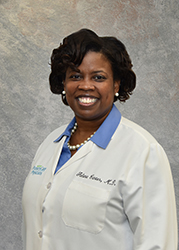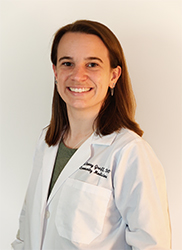By: TIMOTHY KLEPPER, M.D.
Tick season is here, and we’re hearing the usual warnings about Lyme disease. But due to a mild winter and spreading tick population, there’s a new threat to watch out for: babesiosis (bah-bee-see-oh-sis).
Both Lyme disease and babesiosis are parasitic diseases carried by deer ticks, also called black-legged ticks. The CDC reports a significant increase in reported cases of both this year in the eastern U.S.
Lyme disease and babesiosis differ in their symptoms and health risks. Here’s a side-by-side comparison of the two, and what you need to look out for.
| Babesiosis | Lyme disease | |
| Likelihood of infection | Low, especially if tick is attached for less than 36 hours | Low, especially if tick is attached for less than 36 hours |
| How soon symptoms start | 1-4 weeks after tick bite | 3-30 days after tick bite |
| Symptoms | Mild to severe flu-like symptoms: fever, chills, sweating, loss of appetite, nausea, tiredness
In severe infections: yellowish skin or eyes, pale skin, dark urine, shortness of breath, nausea and vomiting, abdominal pain, neck stiffness, sudden mood changes |
Circular bulls-eye rash around the tick bite
Early infection: flu-like symptoms: tiredness, muscle pain, joint pain, headaches, fever, chills |
| Risks | Can be life-threatening, especially if you have a weak immune system or don’t have a working spleen. May cause anemia, enlarged spleen, fluid buildup in your lungs, blood clotting problems, kidney or liver failure | Late infection: neck stiffness, pain and swelling in your joints, numbness or pain in your limbs, memory problems, difficulty concentrating, heart problems. Usually not life-threatening |
| When you should see a doctor | If you were bitten by a tick and have flu-like symptoms, especially if you have a weak immune system | If you were bitten by a tick and have an expanding red rash around the bite or have flu-like symptoms |
| Usual treatment | Combination of anti-parasitics and antibiotics Antibiotics | Antibiotics |
How to prevent tick bites
The best way to avoid getting sick with babesiosis and Lyme disease is to not get bitten. Remember the ABCs of prevention:
“A” stands for avoid. You want to avoid areas ticks are found, such as where there are low bushes, leaf litter and tall grass.
“B” stands for bug spray. Use it when you’re outdoors and think you’re going to be exposed to tick bites. The CDC recommends a bug spray that contains either DEET 30% or picaridin. You also could use a spray that has oil of lemon eucalyptus in it.
“C” stands for cover up. Wear protective clothing. If you have clothing over your skin, ticks won’t be able to bite you.
What to do if you’re bitten by a tick
Use tweezers to grasp the tick as close to your skin as possible, then pull the tick off with steady pressure. Then wash your hands and the area of the bite with soap and water. Sometimes, the mouthparts of the tick will break off and stay in the skin. If you can remove them easily, use the tweezers to pull them out. If you can’t remove them easily, just let the skin heal. Your body will break down the remaining mouth parts over time.
Remember, your chances of getting a tick disease are much lower if you remove the tick within 36 hours of being bitten.
 Dr. Klepper is a Maryland Primary Care Physicians, LLC partner and is certified by the American Board of Family Medicine. He cares for patients in the Queenstown office.
Dr. Klepper is a Maryland Primary Care Physicians, LLC partner and is certified by the American Board of Family Medicine. He cares for patients in the Queenstown office.






